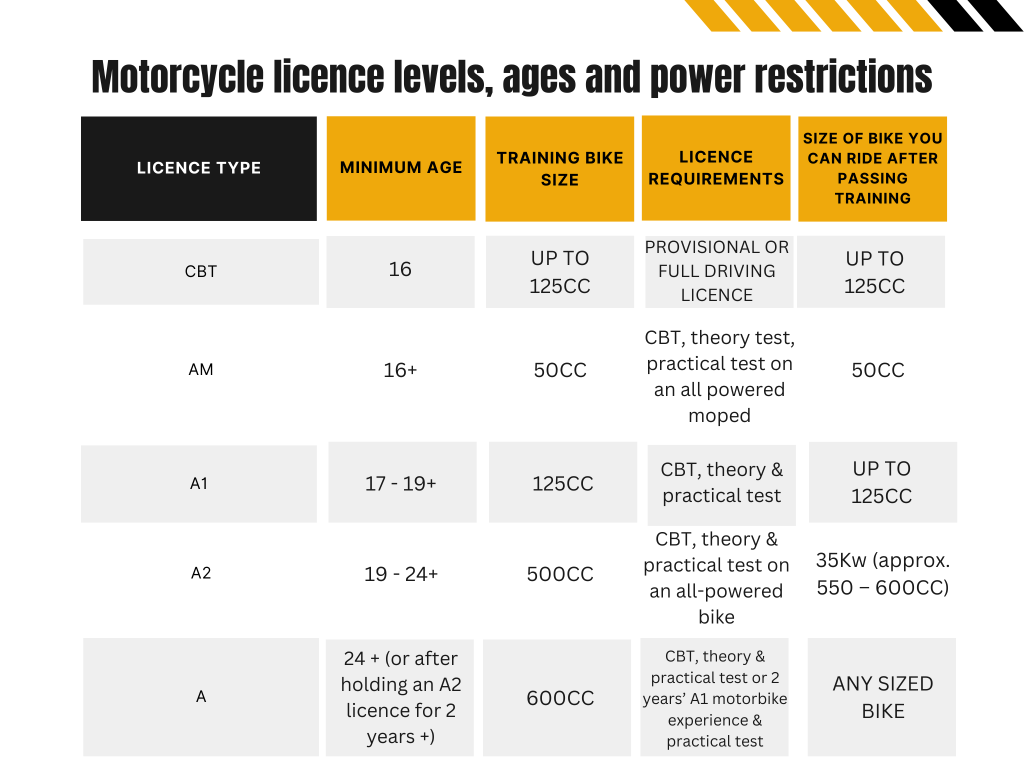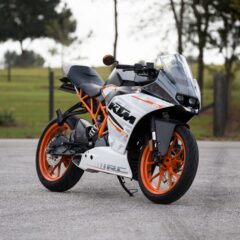
7 Top Motorcycle Accessories
With Christmas just around the corner, you might be wondering what to get your favourite motorcycle enthusiast or even a little something for yoursel...
 Phoenix Motorcycle Training LTD
Phoenix Motorcycle Training LTD
 Phoenix Motorcycle Training LTD
Phoenix Motorcycle Training LTD

Navigating the UK’s bustling roads can feel like a complex dance. One where missteps can lead to disaster. True harmony, and safety, comes from knowing all the steps and rules for others too – including UK motorcycle road rules.
It’s easy to lose motorcycles in the swirl of traffic. Their smaller size and inherent vulnerability mean they’re disproportionately involved in road incidents. This concerns all of us because no-one wants to be involved in an accident.
Understanding road rules for motorcycles helps you foster a safer, more harmonious environment for everyone. This blog clarifies UK motorcycle road rules, answers all common queries about motorcycles on the road, so we can create safer journeys for all of us.
Motorcycles are less visible than cars or lorries. Their smaller size makes it easy for them to disappear in cars’ and lorries’ blindspots, become hidden in shadows, misjudged for speed or simply go unseen at junctions.
This ‘invisibility’ can have severe consequences. UK statistics show motorcyclists account for approximately 1% of road traffic but represent 20% of all road fatalities and serious injuries annually. We can reduce this disparity with a deeper understanding of road rules for all of us.
When we’re understand all traffic laws, we can ride and drive with greater respect and care. That leads to improved anticipation, greater respect for space, and significantly safer interactions for all of us on the roads.
Some UK road rules are specific to motorcycles, scooters and mopeds. That’s simply because of their different needs and road use style. ALL UK road rules are intended to keep us safe, traffic flowing smoothly, and make it easy to get where we need to go without mishap–no matter what kind of vehicle we’re in or on.
In a word, yes. Filtering is legal in the UK. But you MUST do it safely and responsibly. That means keeping your motorcycle to low speeds, generally no more than 30 mph, and remaining alert for hazards and potential dangers.
Highway Code Rule 88 has this to say about filtering through slow moving traffic:
“[Motorcyclists] should be aware of what is behind and to the sides before manoeuvring. Look behind you; use mirrors if you have them. When in traffic queues look out for pedestrians crossing between vehicles and vehicles emerging from junctions or changing lanes. Position yourself so that drivers in front can see you in their mirrors. Additionally, when filtering in slow-moving traffic, take care and keep your speed low.”
It’s frustrating for anyone to sit in traffic. Seeing motorcyclists, moped and scooter riders slip past while you’re stuck feels unfair. But letting smaller vehicles through slow moving traffic means we all get where we want to go a little faster.
It’s crucial for drivers to know motorcycles will filter, especially in congested traffic, and they have every right to do so. Before changing lanes, opening your door, or pulling out at a junction from a queue, always check your mirrors thoroughly, and perform a ‘lifesaver’ glance over your shoulder. Expect motorcycles to be riding in gaps in traffic queues. Give them space. A moment’s care can save a life.
Undertaking (passing a vehicle on its left) causes frustration and confusion. It’s illegal for larger vehicles. But the rules for motorcycles have nuances for congested traffic.
Can motorbikes undertake in traffic?
Avoid undertaking for safety reasons. but it’s sometimes a different story for motorcycles , especially in slow-moving or stationary queues. This relates to situations such as filtering and slow moving traffic.
Rule 163 of the Highway Code states all vehicles should:
“Overtake only when it is safe and legal to do so. You should not get too close to the vehicle you intend to overtake. Use your mirrors. Look and assess. Use your indicators. Before moving out, take a quick glance into the blind spot area to make sure you are not cutting in on a motorcyclist or cyclist. Give way to any motorcycles or cyclists who are already filtering through traffic.”
The mention of “motorcyclist or cyclist… filtering through traffic,” implies motorcycles can move past other vehicles but cars can’t. However, filtering is a very different thing to aggressive undertaking of moving vehicles.
Can you undertake a middle lane hogger?
Middle lane hoggers frustrate all of us! It’s tempting to undertake them, but Rule 268 of the Highway Code says not to:
“You should not overtake on the left.”
If the middle lane hogger suddenly decides to move left and collides with you, you’ll be on the wrong side of the law.
For motorcyclists, it’s an even bigger risk. It’s usually seen as careless or dangerous riding if an incident occurs. It’s almost always safer to overtake on the right. So cool your jets and wait for the right opportunity to overtake.
You’ve probably seen those large, boxes at traffic lights. Usually, they have a bicycle symbol painted inside. Their official name is Advanced Stop Lines (ASLs), but most people call them ‘bike boxes’. They give cyclists the space they need in traffic and a safer head start when lights change. Their primary purpose is for cyclists.
Can motorcycles use cycle boxes in the UK?
The Highway Code says motorcyclists (like all other motorists) MUST stop at the first white line if the lights are amber or red. Avoid blocking or encroaching on them at other times.
However, it’s a practical reality that motorcyclists filter into them. It’s a common sight to practise with extreme caution. There’s no explicit motorcycle road rules allowing it and isn’t encouraged behaviour. The primary intent of ASLs is for cyclists to gain a safe head start.
The important allowance is for slow-moving and congested traffic: if you find yourself beyond the first white line of the ASL box when the lights turn red, you MUST stop at the second white line. But there’s no need to reverse. This is a legal allowance to prevent dangerous harsh braking.
If you are legally in the ASL box when the signal turns green, allow cyclists enough time and space to move off ahead. If traffic is flowing easily, stop before the first line of the ASL, respecting the area is for cyclists.
Highway Code Rule 178 has specific instructions:
“Some signal-controlled junctions have advanced stop lines to allow cycles to be positioned ahead of other traffic. Motorists, including motorcyclists, MUST stop at the first white line reached if the lights are amber or red and should avoid blocking the way or encroaching on the marked area at other times, e.g. if the junction ahead is blocked. If your vehicle has proceeded over the first white line at the time that the signal goes red, you should stop as soon as possible and MUST stop at the second white line. Allow cyclists, including any moving or waiting alongside you, enough time and space to move off when the green signal shows.”
Solid white lines are some of the most basic road markings. They dictate where and when you can overtake. Most questions arise when it comes to their application for agile motorcycles.
Can motorbikes overtake on solid white lines?
In a word: No. The rule against crossing solid white lines applies to all vehicles on UK roads, including motorcycles. These lines indicate danger or specific restrictions for overtaking on that stretch of road. Crossing them to overtake others is illegal.
Highway Code Rule 129 states:
“You MUST NOT cross or straddle it [a continuous white line] unless it is safe and you need to enter adjoining premises or a side road. You may cross the line if necessary to pass a stationary obstruction.”
Whether you’re in a car or on a motorbike, if there’s a continuous solid white line (or a double white line where the one nearer to you is continuous), you cannot cross it to overtake a moving vehicle. This includes filtering if it requires crossing or straddling the solid line. The only exceptions are specific situations like entering a property or passing a genuinely stationary obstruction.
Solid white lines are there for a reason. They indicate limited visibility ahead, a sharp bend, or a hazardous stretch of road. Respecting these markings is fundamental to road safety for everyone. For motorcyclists, the agility of your bike can make crossing solid lines tempting, but the risk far outweighs any perceived benefit. And the legal consequences can be severe. Always err on the side of caution and stick to the rules of road markings.
The thrill of a motorcycle is exhilarating, but you must keep within the bounds of the law, and that includes your speed. There’s a common misconception that motorcycles are somehow beyond speed restrictions for other vehicles.
Can motorbikes get caught speeding?
Absolutely, yes. All vehicles on UK roads, including motorcycles, are subject to the same speed limits and enforcement measures. There are no motorcycle road rules that give riders special privileges when it comes to posted speed limits.
Getting caught speeding on a motorcycle carries the same legal consequences as in any other vehicle. This can include:
Motorcycles are detectable by all standard speed enforcement methods used across the UK, including:
The Highway Code provides general rules on speed limits, these apply to everyone.
Sticking to speed limits isn’t just about avoiding a fine; it’s a way to keep roads safe for everyone. Speed limits are set based on various factors. These inculde road type, potential hazards, and the presence of vulnerable road users.
Controlling your speed as a motorcyclist can decrease your vulnerability in a collision. Always drive or ride to the conditions, stay within the legal limits, and prioritise safety over speed.
Motorcycles offer a fantastic sense of freedom but come with some restrictions to govern who can ride what, and under what conditions. These motorcycle road rules are in place to ensure rider safety and competence. They enable rider confidence to grow alongside the steady development of skills.
What are the restrictions for motorcycles in the UK?
The UK operates a phased licensing system designed to ensure riders gain experience progressively.

Motorcycle permits and licence levels come with a few additional restrictions to keep them and other road users safe.
Drivers should be aware that L-plate riders are less experienced and prohibited from motorways. They should give them extra patience and space. Knowing the staged access system to motorcycle licensing is crucial for legal and safe progression.
This scenario is more likely in congested urban areas or when needing to move a bike a short distance off the road. But it often raises questions from pedestrians about what is allowed.
Can you legally push a motorbike on the pavement in the UK?
There’s no specific motorcycle road rules about this, and the answer here depends on whether the engine is off. When you are pushing a motorbike with its engine off, you are generally considered a pedestrian. When it’s on, you’re not.
However, this doesn’t grant you carte blanche to treat the pavement as a regular thoroughfare for your bike. You must use pavements with extreme care and consideration for others. You should only push your motorcycle on the pavement when…
The Highway Code’s rule 15 provides general guidance for pedestrians that would apply in this context. It advises pedestrians to use the pavement where provided. While it doesn’t explicitly state “you can push a motorbike here,” the implied status is that of a pedestrian when the engine is off.
Understanding the nuances of UK motorcycle road rules fosters a harmonious road environment for all of us. Knowing the legalities around filtering, undertaking, ASLs, solid white lines, speeding, and even pushing a motorbike on the pavement means we understand each other better and accommodate different situations with greater ease.
Understanding is just the first step, gaining practical skills turns your knowledge into confident, safe road behaviours. Whether you’re an aspiring rider looking to gain your licence, an experienced motorcyclist seeking to sharpen your skills, or a car driver keen to better understand two-wheeled road users, professional training is an invaluable investment.
To truly master the roads with precision and awareness book a motorcycle training session. It’s an investment not only in skill, but in safety, confidence, and continued enjoyment on the road; even if you’re happy to remain behind the wheel of a car!
Whether you’re on two wheels or four, every journey becomes safer when we all play our part, look out for each other and stick to the guidelines that keep traffic flowing smoothly.

With Christmas just around the corner, you might be wondering what to get your favourite motorcycle enthusiast or even a little something for yoursel...

If you love motorcycle riding, you’ve probably daydreamed about riding a motorbike for a living. A professional racer or stunt rider is OK for some...

Getting a UK motorcycle licence can seem a complicated process. Particularly when compared to a driving licence for a car. Whether you choose the pro...
This website uses cookies to personalise content, ads, and analyse traffic, sharing data with partners who may combine it with other information. See our Privacy Policy for more information.